Ashley Stanton-Yonge, University College London, EGU 2019, Vienna
The TSG travel bursary provided me the opportunity to attend to EGU General Assembly 2019, taking place in Vienna. I gave an oral presentation called “The permeability of fracture intersections in basalt”, co-authored by Catalina Sanchez-Roa, Thomas Mitchell, Yoshitaka Nara and Philip Meredith. In this talk I presented early results of my PhD research, which aims to combine experimental and field work to quantify and characterize the permeability of fault-fracture networks. This has direct applications in numerous fields, particularly, the study of fracture controlled geothermal reservoirs. My presentation had a wide, international and expert audience, from whom I received plenty and helpful feedback which will guide the following steps of my research.
I also presented two posters as a second author, which resulted from projects I am collaborating with. The first one was presented on Monday, was named “Hydromechanical development of fault-controlled orogenic gold deposits: A numerical approach to constrain the spatial distribution of mineral reserve” authored by Pablo Iturrieta, and the second poster, presented on Friday, was “Long- and short-term tectono-magmatic role of transverse fault systems in the Andes: A combined geological and numerical approach”, authored by Jose Cembrano. Both were attended by numerous researchers working in frontier fields, which allowed fruitful discussions and opportunities for collaboration.
I am extremely grateful for the TSG financial support without which I couldn’t have attended to this conference, as my PhD scholarship does not include any extra funding apart from tuition and stipend. During EGU not only I received helpful feedback that will definitely improve my on-going research, but also I got to know many of the researchers from the Rock Physics community and learnt about their most recent developments. This experience was thus an invaluable source of knowledge, ideas and opportunities for collaboration.
I would like to acknowledge TSG for giving this opportunity to early career scientists and encourage any other researchers in this position to apply for this support.
Many thanks!
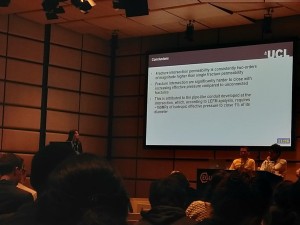
Kit Hardman, Durham University, TSG AGM 2019, Bergen
Using the TSG conference Bursary, I was able to attend the 2019 TSG AGM in Bergen, Norway. The conference included a short course, followed by three days of talks and posters in the heart of Bergen at the newly renovated Natural History Museum, and of course a brilliant conference dinner in a micro-brewery.
The short course I attended was given by Dr Bjørn Nyberg and Casey Nixon on “Fracture Network Topology Analysis in Network GT”. This course covered the fundamentals of fracture topology and network statistics, and introduced Network GT – an ArcGIS toolkit for analysing network geometry. Myself and others were excited to attend this course as many of us have used topological analysis in our own research and have been looking for ways to improve, and the insights and help we received on this course comfortably gave us the skills and confidence to use NetworkGT to get the most out of our data accurately and confidently.
The conference itself included a large number of highly varied talks and posters. Conferences like these are unique in that they cover a huge variety of scientific material and different methodologies, but share enough of an overarching approach that the delivered material is not lost on the audience. This means that the discussions and collaborations between delegates are highly useful and informative.
I was fortunate enough to present a talk myself entitled “Fault void Fills: Reactivation, frictional melting, and void formation during ancient earthquakes”. This work was based on fieldwork I completed in the North West Highlands of Scotland, funded by the Geological Society Annie Greenly Grant, looking at deep void formation and collapse in shear zones. The feedback I got from the committee and delegates were of great value, and I have since written a list of all the things I want to change and add to improve both the science, and the communication. The timing of this feedback is ideal as I begin to write this up for publication. My talk was lucky enough to be awarded the “Mike Coward Prize” for best student talk, which is an exceptional morale boost and gives me the confidence and motivation to continue with the research.
The city of Bergen itself, (and the conferences extensive use of twitter), meant that in the evening following the talks it was easy to meet up with other people and chat about anything and everything from the price of beer in Norway to the days talks. This conference was certainly one of the most fun and informative I have been to, so many thanks to TSG, for both funding my place and organising such a successful event!
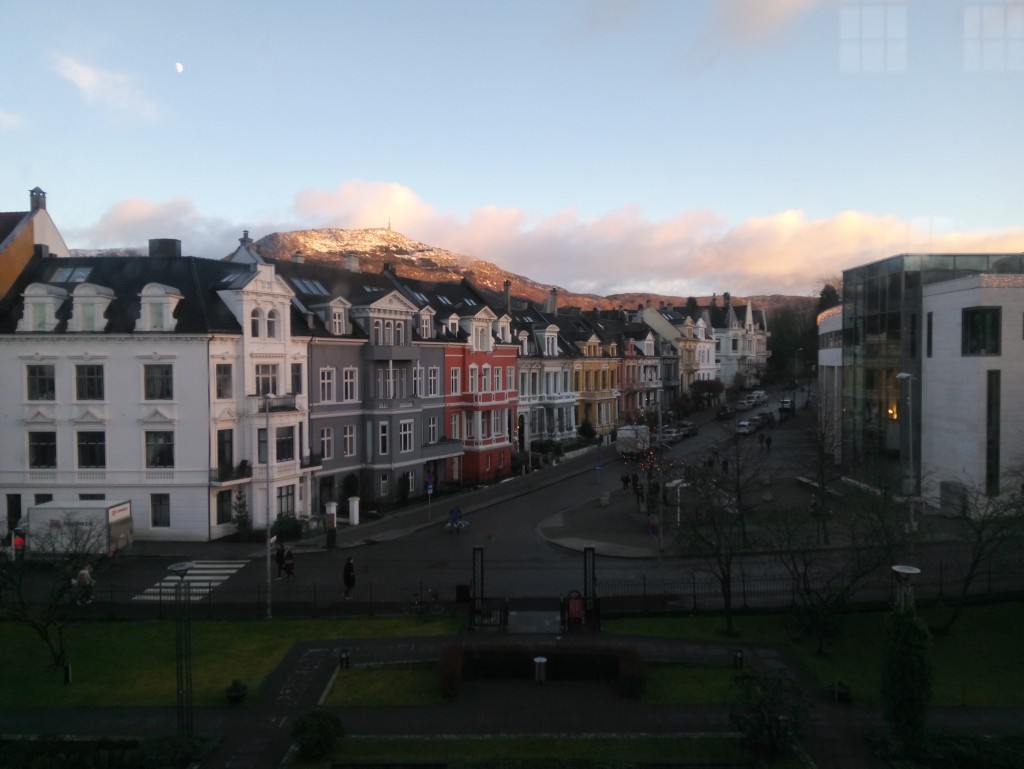
Laura Scott, University of Liverpool, TSG AGM 2019, Bergen
I was awarded a student travel bursary to support my attendance at TSG (Bergen) 2019 to present a poster on my MScR work, completed in September 2018. As a first year PhD student, I have not had many opportunities to present before, and as TSG is so friendly, it made a great start for presenting a piece of work I was confident and enthusiastic about.
I had some interesting discussions with other researchers around my poster, entitled ‘Dyke reactivation across the frictional-viscous transition: Insights from Precambrian deformation of Scourie dyke margins in NW Scotland’. My results were based on field and microstructural observations which analysed cross-cutting relationships at the margins of the Scourie dykes, suggesting different stages and styles of tectonic reactivation post-dyke emplacement. Similar styles of reactivation to those observed at the dyke margins have been seen across larger scale shear zones within the Assynt terrane (e.g. the Canisp Shear Zone). One of my favourite parts of this research was investigating the sinistral shearing event seen across two of the localities. Field evidence included sinistral epidote slickenfibres and narrow bands of sinistral ultramylonites (Loch Assynt), and 1-2cm thick pseudotachylytes (Achmelvich). Coupled with microstructures (Fig. 1) including sinistral ultramylonites (Loch Assynt), and brittle sinistral shears and associated pseudotachylytes (Loch Assynt and Achmelvich), this indicates a large scale sinistral shearing event that cross-cuts Laxfordian shearing. This is temporarily referred to as the ‘Late Laxfordian’ whilst regional evidence is being collated to define this event.
My PhD follows on nicely from this work: I am researching the origin of pseudotachylytes and their association with interseismic creep. I will be researching the Ivrea-Verbano Zone (Itlay) in conjunction with cores from the Alpine Fault Zone (New Zealand), along with experimental work to document and analyse the pseudotachylytes that are present. Discussions around my poster were therefore invaluable, as not only did I get feedback on my poster, I got a chance to start discussions that will help with my PhD moving forward.
Presenting a poster at the conference improved my confidence in presenting, and in my work, as everyone I spoke to gave me really great comments about my poster, my work, and complimented the discussions we had. Having dedicated poster sessions during the conference really helped to drive interest around the posters, and promote discussions between fellow researchers. Not only did I gain experience presenting a piece of work I love, I attended a great programme of talks, and got to see and experience the beautiful city of Bergen!
Whilst being a NERC DTP student, my MScR work was self-funded and my current PhD will entail a lot of fieldwork abroad, therefore having the TSG bursary was a great help. It means I can spend longer on fieldwork collecting data in future years – thank you so much to TSG for the amazing opportunity!
Derya Gürer, University of Queensland, TSG AGM 2019, Bergen
The Tectonic Studies Group Annual Meeting 2019 was held in Bergen, Norway, between January 14th-16th 2019, with optional short-courses the day prior to the conference. The meeting was attended by 150 participants from academia and industry and hosted at the University of Bergen’s Aula. It was a spectacular mix of short courses, talks and keynotes, posters, prizes, lunches, bolle, fresh snow, drinks and even a ‘Geology Jukebox’ during the conference dinner.
Thanks to a TSG Early Career Researcher travel bursary, I was able to attend the meeting in Bergen and had the opportunity to communicate, discuss and test novel ideas and emerging research results in an informal environment. The research presented at the meeting spanned a wide range of scales: from atomic to tectonic plate scale.
I presented talk titled ‘In-situ U-Pb ages of multiple generations of calcite related to the Ivriz Detachment, Central Anatolia’ (co-authored by A. Gerdes, R. Albert, F. Kirst, and J. Linckens), which resulted from a multi-disciplinary and multi-scale study of a tectonically complex region, in which classical structural geology is combined with non-traditional isotope geochemistry. Direct dating of tectonic fabrics is valuable, yet challenging especially in regions with a complex tectonic history. LA-ICP-MS U-Pb dating of calcite has recently been used to date multiple diagenetic and brittle tectonic events in-situ. I presented results from the first attempt to carry out in-situ U-Pb dating on marble mylonites that underwent semi-ductile to late brittle deformation associated to the activity of the Ivriz Detachment bounding the Central Anatolian extensional province. The results of this research show that combining the detailed structural analysis in tectonic carbonates with absolute in-situ dating contributes greatly to tectonic studies. Following my presentation I participated in discussions on selecting suitable samples, current advances and shortcomings in laboratory techniques, and future directions for the improvement of analytical protocols.
The excellent talks, posters and discussions aside, one of the many highlights of the meeting was the conference dinner held in Kalfaret Brygghus, the former Hansa brewery with excellent food accompanied by the ‘Geology Jukebox’ by Karen Mair (UiO), in which raw scientific data of earthquakes and deformation of rocks became sound instead of being visualized. Special thanks to Atle Rotevatn (UiB), the lead-organizer of the meeting, and the many Bergen-based helpers for organizing such a successful meeting. Thank you TSG!
Max Webb, University of Wollongong, TSG AGM 2019, Bergen
Receiving a conference bursary from TSG this year allowed me to attend the TSG conference in Bergen, Norway to present the final results from my PhD, which I have since completed. I have attended two previous TSG conferences (London and Liverpool), but having spent the last two years working on my PhD in Australia at the University of Wollongong, this bursary gave me the opportunity to integrate myself back into the TSG community and bring some of my results back to the European geology community. The conference in Bergen was a lot of fun and really well organised, especially with a fantastic technical team behind it. The fact that poster boards were set up in the same room as the oral presentations worked well and meant that there was always something interesting to listen to or read throughout the day as the conference went on. I also learnt that, although quite expensive (though not that dissimilar to Australian prices) Norwegian beer is fantastic!
At the conference I presented a talk entitled: Accretionary processes at the northern Australian margin in NW New Guinea – A record of rapid and recent orogenesis. This was essentially a synthesis of my entire PhD and the main field evidence that I have used along with my supervisor Lloyd White and field partner Benjamin Jost to understand how the mountains of New Guinea have formed as a result of complex and rapid orogenic processes throughout the Cenozoic. I also used it as a platform to express how much fun fieldwork in the rainforest is! The presentation was well received, and I got some great questions and feedback along with the discussions I had been having about mountain building and fieldwork in the poster sessions throughout the conference. This was a great opportunity for me to showcase some of the work we are doing in New Guinea, which has typically only reached Australian audiences so far, and to gain new insights into how relatively modern orogenic processes develop by discussing some of the more ancient examples presented at the conference. Overall this was a fantastic trip and I would like to thank TSG very much for giving me this opportunity.
Bob Bamberg, University of Leicester, TSG AGM 2019, Bergen
Thanks to the financial support by the TSG travel bursary, I had the opportunity to attend the TSG AGM in Bergen. I presented a poster with initial findings of my newly started PhD project on the mechanical and hydraulic properties of basalt hosted fault zones, with the main aim of understanding the effects of pre-existing structures and alterations on those properties.
The conference was kicked off by a highly instructive short-course by Bjørn Nyberg and Casey Nixon on fracture topology and their NetworkGT toolbox for ArcGIS, a perfect opportunity to familiarise with this tool that will be highly auxiliary for assessing fault zone geometry in my project. Generally, the contributions covered a wide spectrum of topics, from basin dynamics to microstructural deformation processes and provided very interesting insight into the current research in structural geology. Posters were on display for the full three days, and I could get a lot of very valuable feedback on my work as well as advice on some of the problems I might encounter further in the project. This input is particularly valuable as the structural geology group in Leicester is rather small.
The smaller size and familiar vibe of the conference made socialising and networking very easy for people that are new to the community, like me. First and foremost, all the attendees were very enthusiastic and keen on exploring the beautiful city of Bergen in the evenings, but also the venue strongly promoted an active exchange between participants during poster sessions, lunch and coffee breaks. I would absolutely recommend attending TSG AGM to anyone starting out in structural geology.
The TSG AGM in Bergen was a great experience, where I could present and find advice on my research, learned about a variety of topics, and had many interesting discussions with people from various backgrounds and levels of expertise. With only limited research funding available, the TSG bursary was invaluable for attending this conference. Thank you TSG!
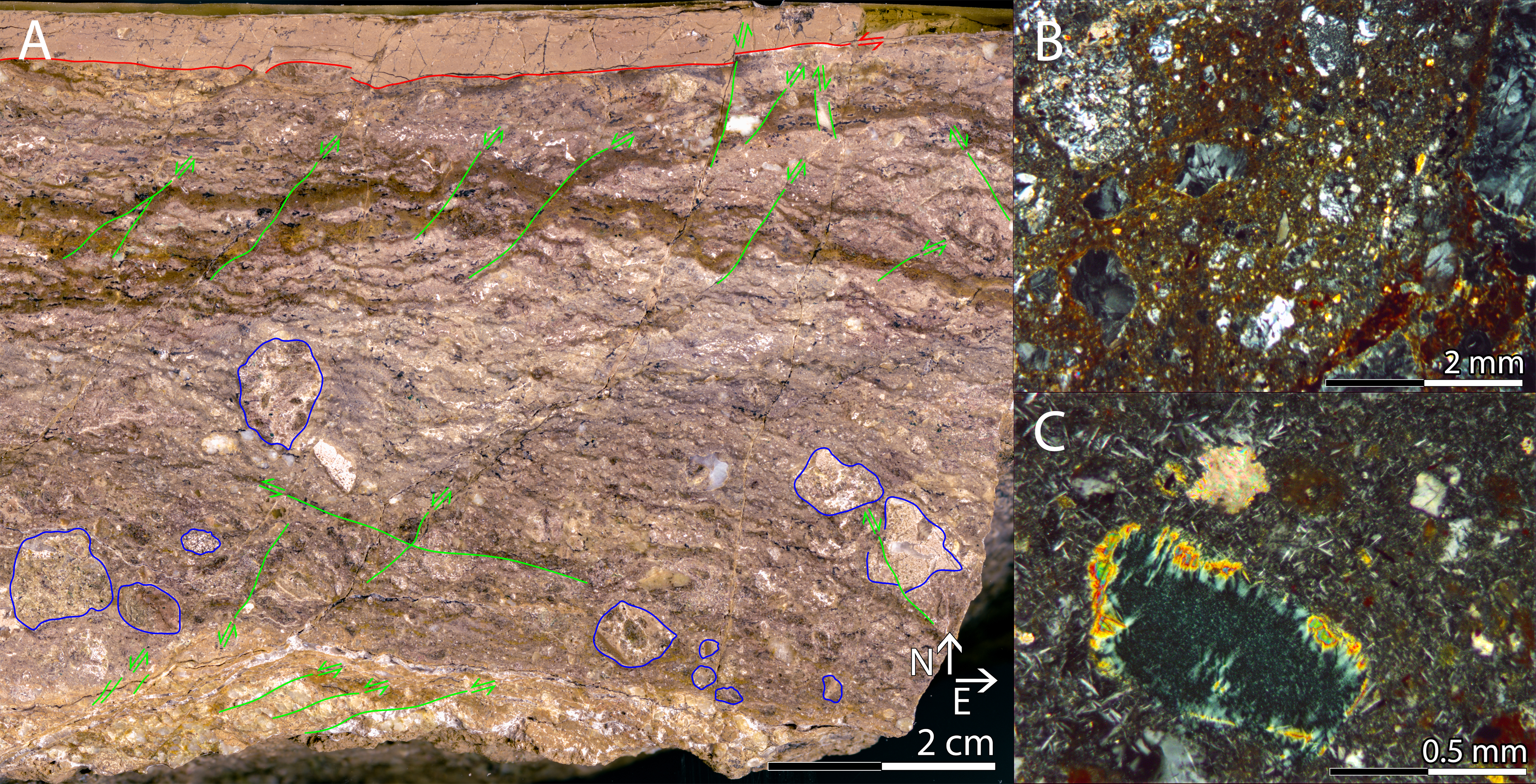
Almunda Sanchez de la Muela, Birkbeck, University of London, AGU Fall Meeting 2019, San Francisco
Thanks to the TSG travel bursary I was awarded, I attended the AGU Fall Meeting held in San Francisco in December 2019, at the end of the Union’s Centennial year. It was a week-long and hugely varied international conference at which I had chance to present and discuss my work, listen to suggestions from other researchers, catch up with old colleagues and friends and even explore the city!
Through my oral presentation titled “Evidence for magmatic-related induced seismicity along misoriented faults in the Southern Andes” I presented the results of my seismicity analysis on the 1st day of the conference. After 20 months of monitoring seismicity in the Southern Volcanic Zone of the Andes, the resulting hypocentres distribution reveal the presence of seismogenic Andean Transverse Faults that weren’t known before. These are located along the edge of conductive anomalies interpreted in a coeval magnetotelluric study as magmatic/hydrothermal fluids reservoirs of the Andean volcanic arc, suggesting the seismically active ATFs are barriers to fluid flow and are controlling the location and extent of crustal fluids accumulations. The observed ATFs show apparent misorientation for reactivation slip in the Andean tectonic context and due to their proximity to magmatic-related fluids reservoirs, seismicity might be partially driven by high pore fluid pressures associated to the reservoirs.
I took advantage of being at the largest geophysical conference in the world by having 3 fruitful meetings to discuss the implications of my results, steps forward in my data analysis and crucially research opportunities after my PhD. These were with researchers based in California and Chile with whom meeting in person can be difficult. Furthermore, I got to enjoy a very motivating Presidential Forum lecture by Dr Mae C Jemison and I found the time to go around the Exhibit Hall too, where I found out about institutions and organisations I hadn’t heard of before. Taken by surprise, I also bumped into lecturers and friends I met when I was doing my undergraduate at the Complutense University of Madrid, which was a very nice opportunity to catch up on our work and lives.
Moreover, I was lucky enough to go for a walk with some peers during the conference week and we saw the most astonishing slickensides ever, at the Corona Heights mirror fault (see pictures below).
Being a final year PhD student and because my fieldwork expenses where high, I didn’t have research funding left to cover the costs of such a conference, so the TSG bursary was crucial for my attendance. I can’t be more grateful, thank you so much TSG!
almudena.muela.16@ucl.ac.uk | ResearchGate
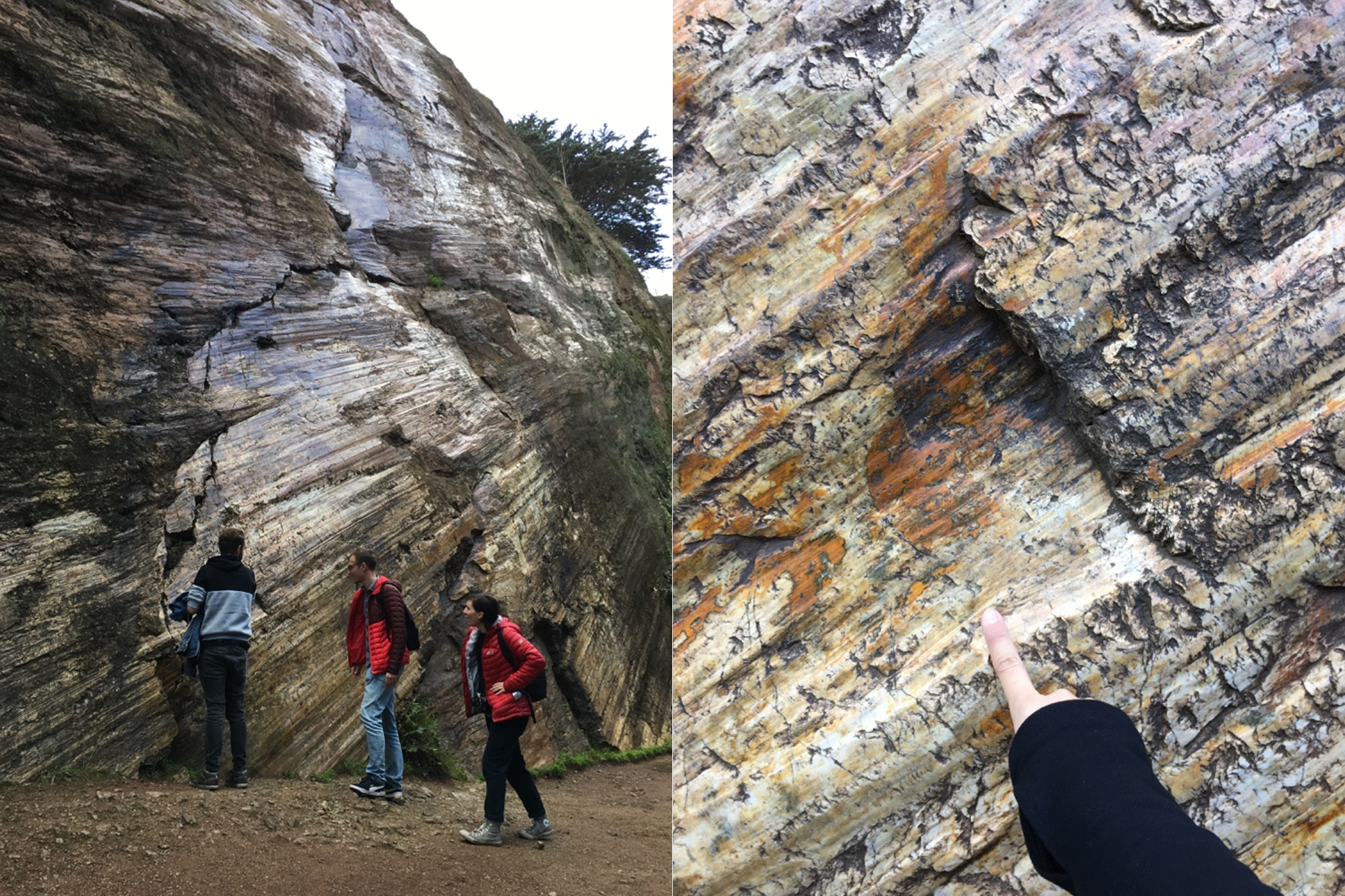
Sian Lianne Evans, University College London, GCSSEPM Perkins-Rosen Conference 2019, Houston
The GCSSEPM conference on salt tectonics in Houston this year was a fantastic, eye-opening experience for me in terms of both the technical discussions, and the chance to develop my presenting and networking skills. I particularly enjoyed the opportunity to exchange ideas with other researchers in my field as there are relatively few conferences aimed specifically at the niche field of salt tectonics! Many different organisations attended, from industry to academia, but with a shared enthusiasm for structural geology and tectonics, and were thus able to provide novel perspectives on each other’s work.
I presented my research on intrasalt structure and strain in layered evaporites from the Messinian salt in the eastern Mediterranean. Giving this talk represented a great opportunity to synthesise my research into an engaging story for the audience. In the lead up to the conference most of my preparation time went into rehearsing the talk. I was nervous about presenting my work to such an expert audience which included those who have pioneered the field itself, and many of whom had been working on this since before I was born! Thankfully, the hard work paid off and the feedback I received on the presentation was invaluable. I had excellent questions and even sparked a debate between the audience members as to the extent to which we can model salt as a fluid over geological timescales. I had many follow-up discussions afterwards and was even called up again during the ‘open discussion’ later that afternoon. The dedicated time for ‘open discussion’ was an excellent addition to the format of the conference as it gives space to reflect on the presentations given, draw common themes, identify gaps in our collective understanding and enter into a more in depth discussion than can be achieved in a quick Q&A.
All in all, I thoroughly enjoyed my time at the conference and the feedback, knowledge and skills I acquired will benefit the quality of my research going forward. I would like to gratefully thank TSG for the bursary which enabled my participation in the conference.



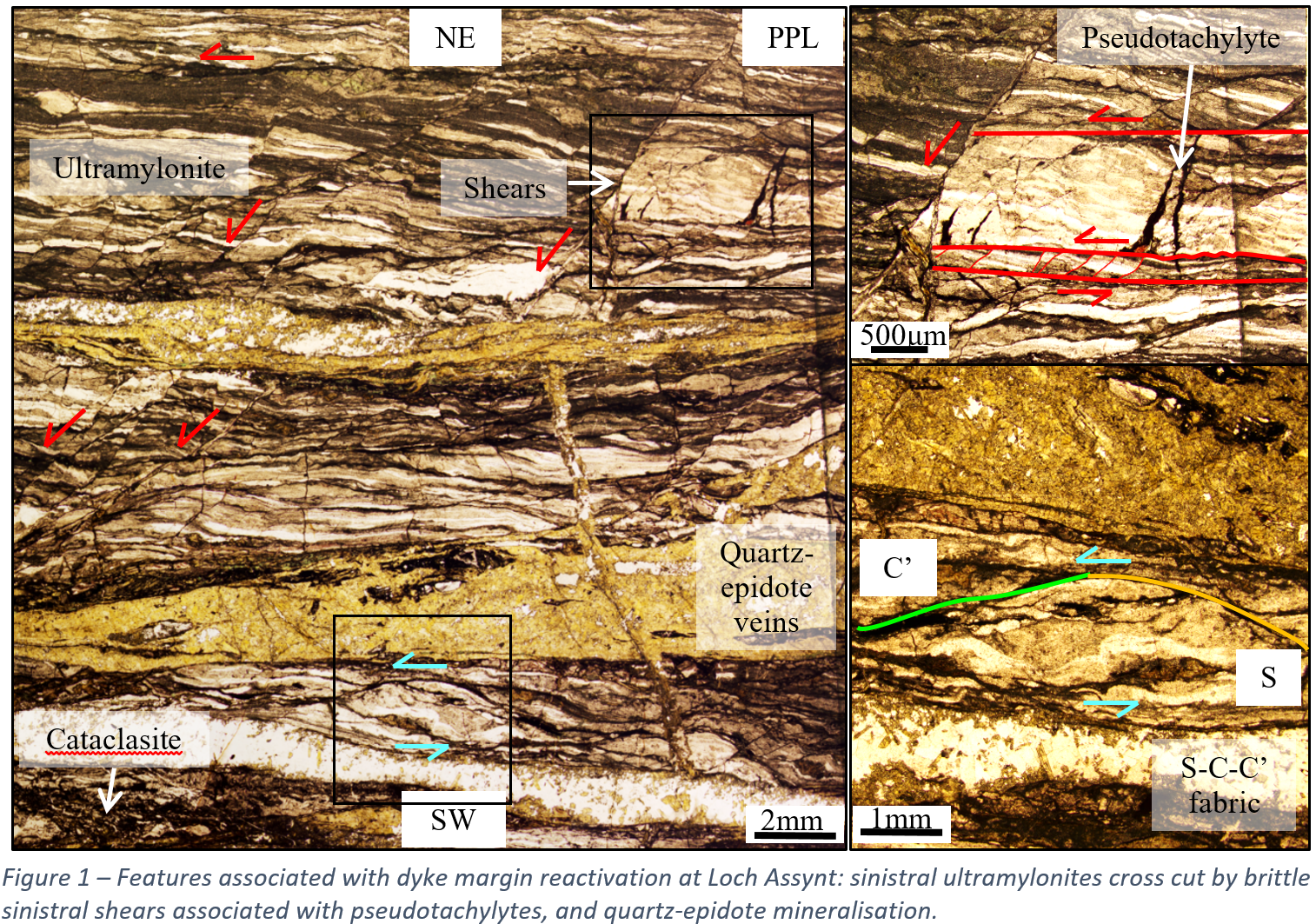
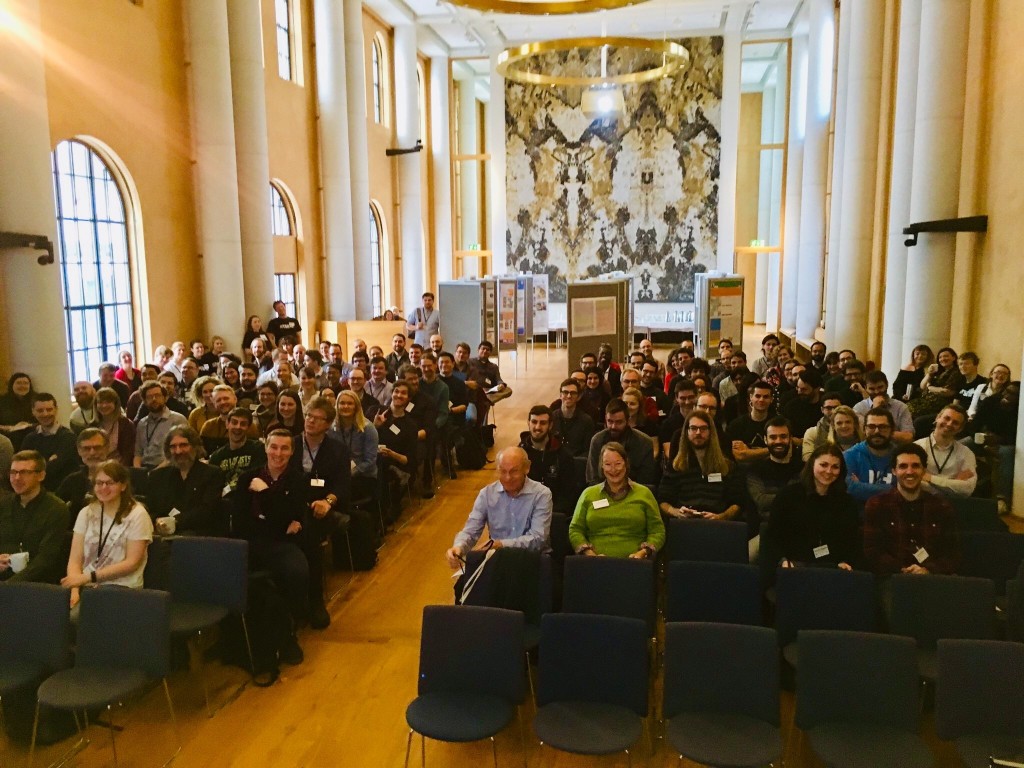
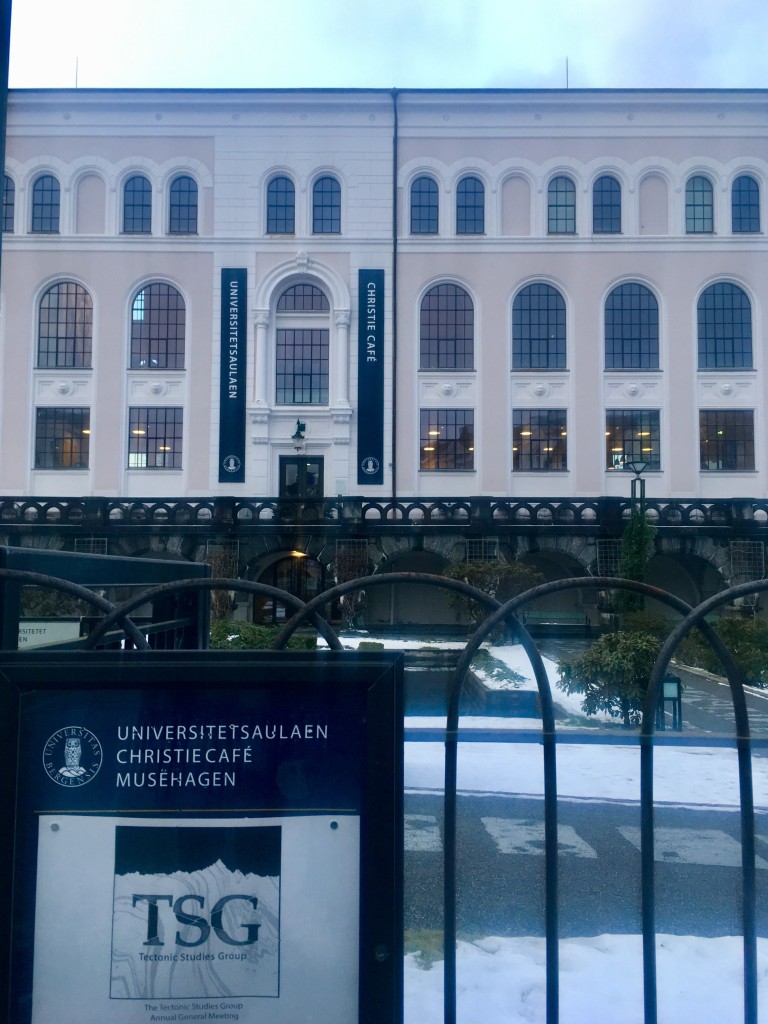

Follow Us!